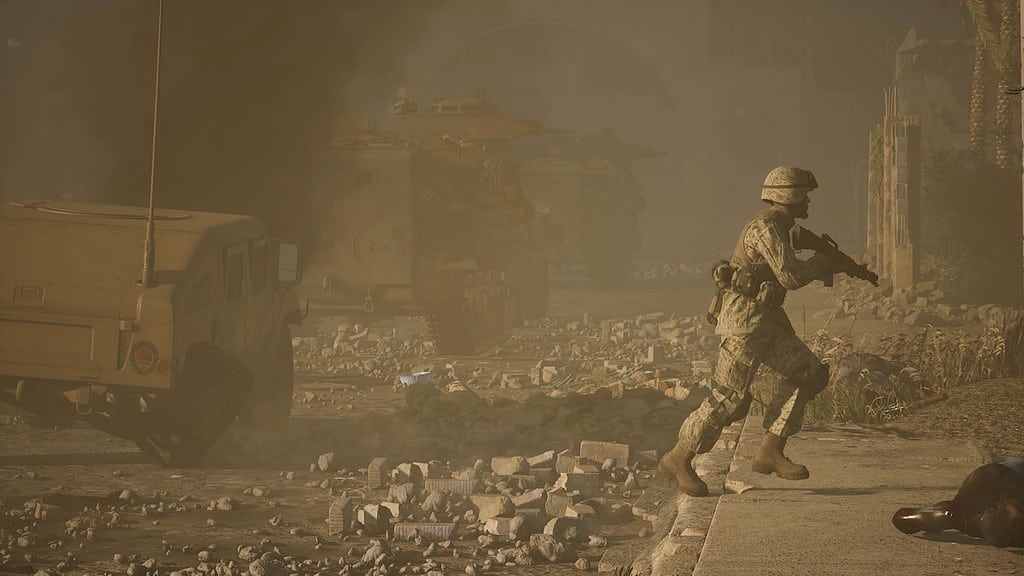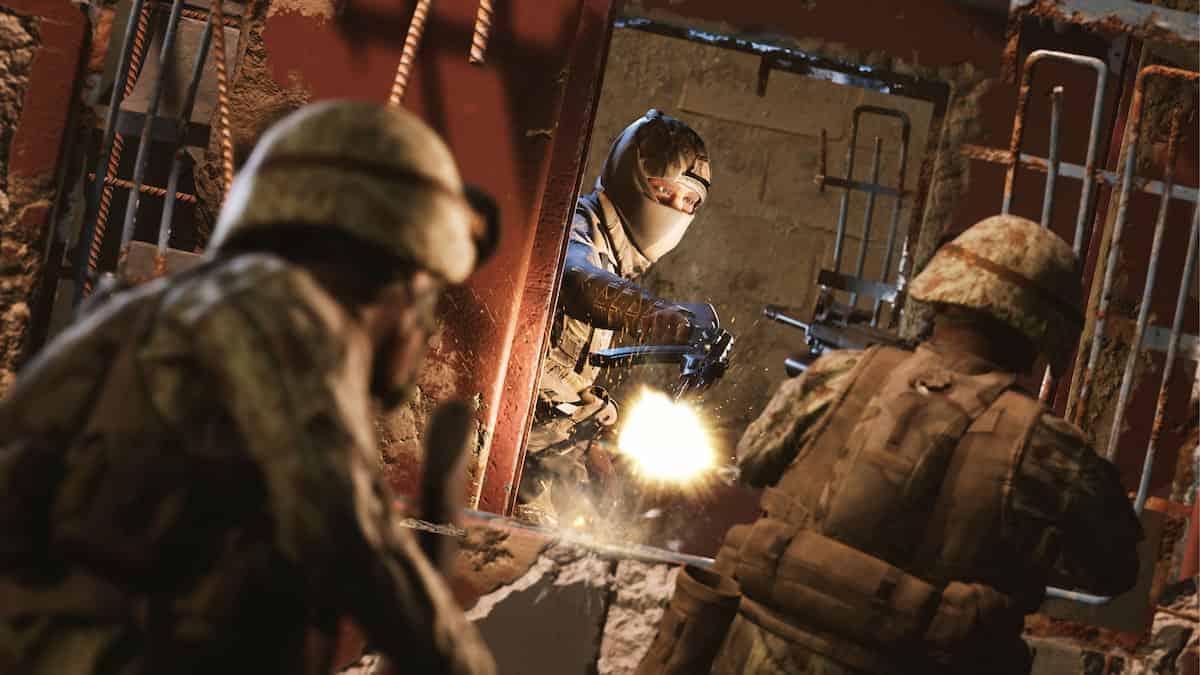This article is part of a promotional campaign for Six Days in Fallujah.
For developer HighWire Games, one-shot kills are not enough to capture true realism. For them, it was imperative their upcoming tactical survival shooter Six Days in Fallujah captured the intense psychological demands of battle, where nothing is ever certain apart from the constant threat of death.
CLICK HERE TO PLAY EARLY ACCESS
“We believe the conventional ways of thinking about video game realism, such as one-shot kills, don’t do enough to create realism,” said Peter Tamte, CEO of HighWire Games. “Yes, we do have one-shot kills, but so does almost every other game.”
To deepen realism, they created a unique Procedural Architecture technology. Here, the inside and outside of every building is generated differently by the simulation each time the game is played. This also means the designer can’t place individual enemy AI in specific parts of the map, since the map doesn’t exist until the game is played.
“True realism comes from much deeper ways of stimulating the feelings of combat, such as the way procedural architecture creates uncertainty, how the game’s AI stalk, flank, ambush, and coordinate attacks against you, how high contrasts between light and darkness continually keep players off balance, and how grenades kick up so much smoke and dust inside rooms that you can’t see where the door is. These are the things Marines talk about when they describe combat.”
“For example, in conventional level design, the designer places doors, walls, windows, staircases, roads, trees, and everything else exactly where they want them. Then they place each AI exactly where they want them inside this static environment. Then they script the behaviours for each of these AI that determines how each one will react under predetermined circumstances.
In contrast, AI enemies in Six Days in Fallujah are programmed with tactics insurgents used during the battle, along with intelligence that allows them to navigate anywhere across the entire map, while they stalk, flank, hit-and-run, and ambush players.”
A key part in ensuring the most realistic experience possible is making sure that every mistake has a high cost, as if there are no consequences the players will not behave realistically. ”We increase lethality, and we use a bleed-out method that requires self-aid or buddy-aid to return to stability,” said Tamte. “And just how it’s very difficult to return fire while you’re getting shot in real life (we’ve interviewed many Marines who were shot during combat), in Six Days we also make it difficult to return fire while you’re getting shot.”

A large part of recreating the psychological aspect of battle comes down to the game’s visual style – but due to the use of procedural architecture, this brought with it a number of challenges. “The only way to make environments and characters look photo-realistic is by calculating how light bounces around the environment, changing not just the darkness of each pixel in both the environment and the characters, but also the subtle colour differences of each pixel,” explains Tamte.
“Until now, the principal way to make games look beautiful has been by pre-calculating all this lighting. Lighting is “baked” into the environment and then special reflection maps are created to help characters look like they belong in this environment. Of course, all these methods assume the environment stays static all the time. Otherwise, there’s no way to pre-calculate all the lighting. This is impossible for environments that are generated procedurally.
“Global Dynamic Lighting allows us to render environments at a high quality, as well as giving us a dynamic system to make combat more realistic. For example, interior rooms look very dark from the outside until you get very close. Then your eyes adapt, and you can see inside better. But getting close to windows is dangerous – especially if it’s dark inside. It’s one of many tactical decisions you will need to make.”
Six Days in Fallujah is out now via early access on Steam.



 0 Comments
0 Comments 